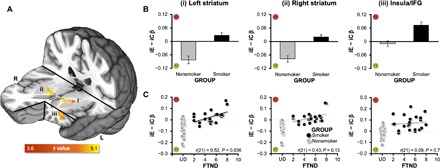Fig. 4. Group effect: Smoker versus nonsmoker differences in feedback responsivity.

(A) GROUP differences in contrast values (iE − iC βs) were observed in the bilateral ventral striatum and left anterior insula/inferior frontal gyrus (IFG) (independent-samples t test of session-averaged contrast values, Pcorrected < 0.05). (B) Chronic smoking was associated with reduced positive feedback responsivity (smaller negative/larger positive values) in the (i) left and (ii) right striatum and increased negative feedback responsivity (larger positive values) in the (iii) left insula/IFG (numbering corresponds to that in Panel A). (C) Contrast values in smokers’ left ventral striatum correlated with FTND scores (PBonferroni-corrected = 0.036), such that higher levels of addiction severity were linked with greater alterations in positive feedback responsivity (black circles, smokers; gray circles, nonsmokers). Indicative of regional specificity, a similar correlation with FTND scores was not observed for the left anterior insula/IFG (P = 0.7). All nonsmoker FTND scores are undefined (UD) and are staggered around that point in the graph to allow for visualization of all data points. See table S3 for cluster coordinates and fig. S4 for additional cluster characterization including separate β weights from iE and iC trials (as opposed to the difference score).
